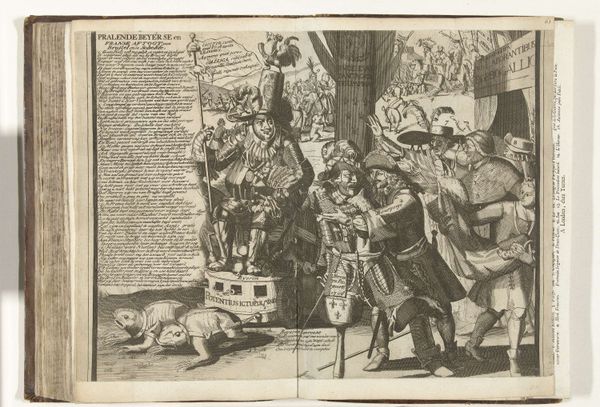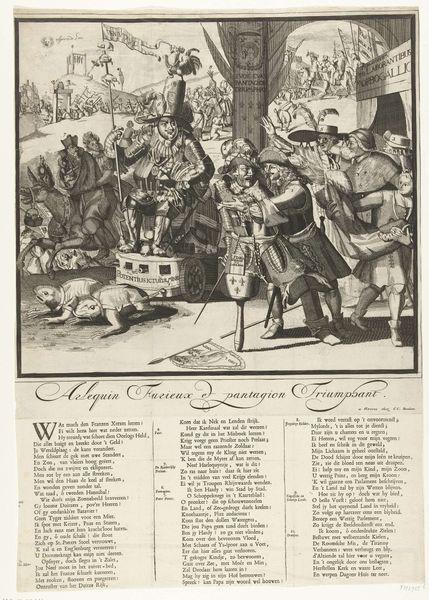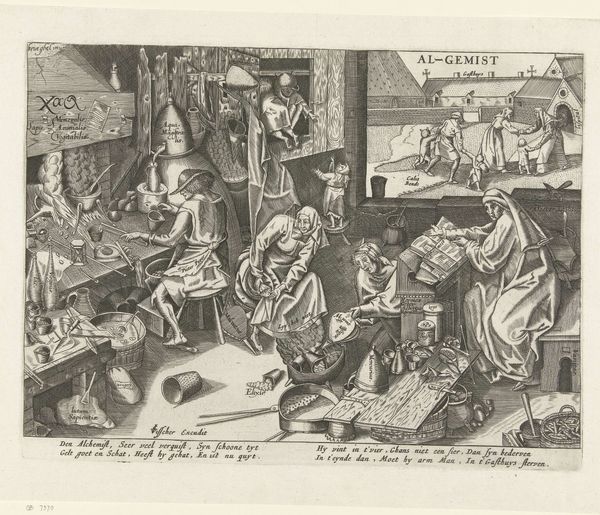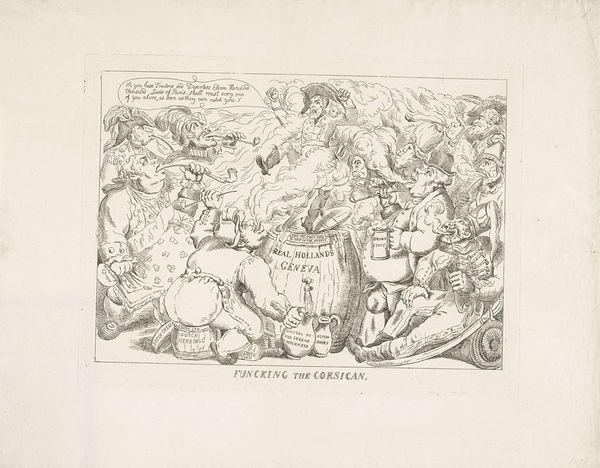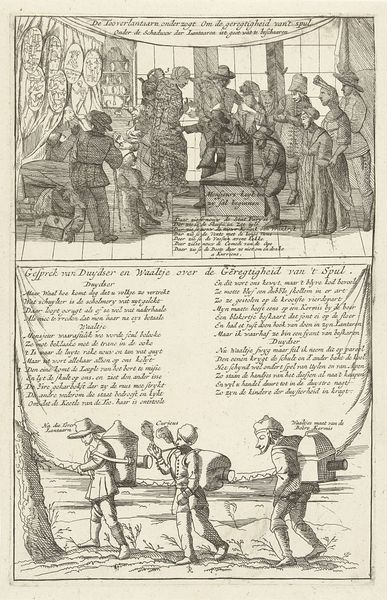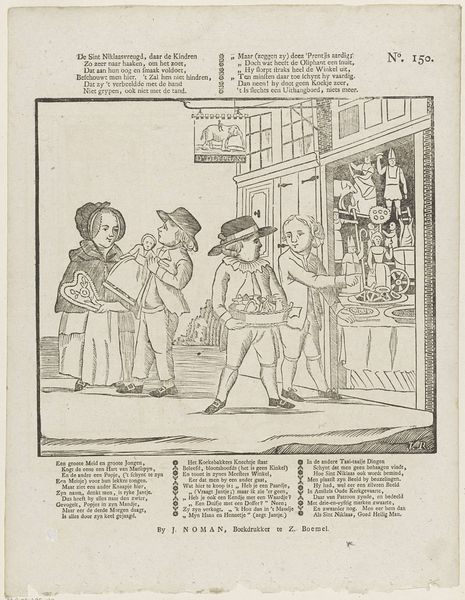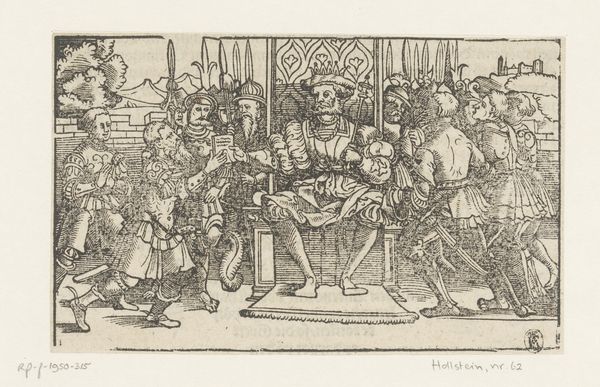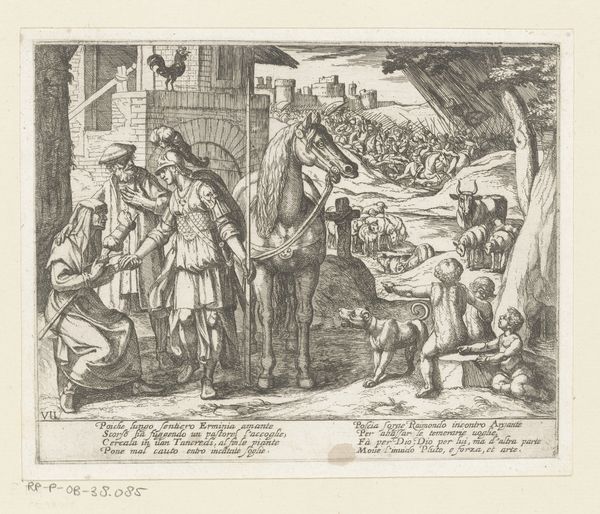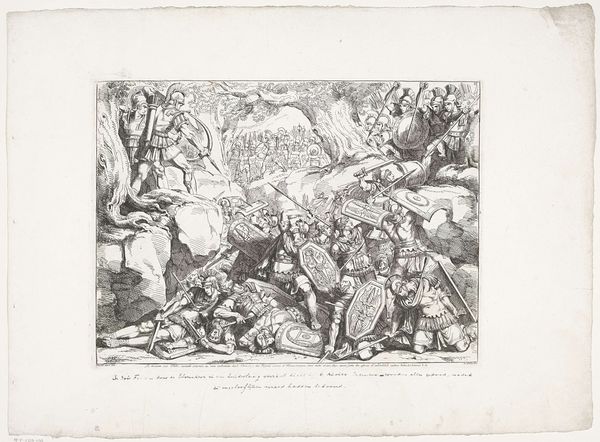
print, etching, engraving
#
narrative-art
#
baroque
# print
#
etching
#
history-painting
#
engraving
Dimensions: height 180 mm, width 270 mm
Copyright: Rijks Museum: Open Domain
Curator: This print, "Aftocht van de keurvorst van Beieren en de Fransen, 1708," created by Carel Allard and residing here at the Rijksmuseum, depicts a historical narrative through engraving and etching techniques. Editor: My first impression? It's teeming with details. The contrasting use of fine lines creates depth and seems to serve a symbolic language within the whole structure. Curator: Indeed. Let's consider Allard's artistic choices: The deliberate combination of etching and engraving allowed for varied textures, perhaps reflecting the turmoil and complexities of the event being portrayed. This use of process mirrors the disorder in its social context. Editor: The way he manipulates light and shadow—particularly in the figures' garments—draws the eye and helps decode the narrative. Semiotically, notice the symbols employed: What can we infer about Bavarian power from the scale of figures or objects that represent it? Curator: These symbols highlight production capabilities of the engraver. It suggests Allard, through this medium, sought to influence public sentiment against the alliance through accessible art for consumption, effectively weaponizing the means of reproduction. Editor: But isn't it about the artwork too? The Baroque dynamism of the composition heightens the sense of chaos. Every component of the design contributes to that feeling of imbalance. It certainly does not depict order; consider that distortion and asymmetry might function as primary visual components in reading this. Curator: It’s hard to dismiss the intended effect that propaganda would’ve had on its intended audience, not merely by evoking strong visual sensations, but by explicitly communicating a polemic to disparage France’s leadership. Editor: Well, regardless, a rigorous structural examination is fundamental here. To truly experience art, we must understand the relationship of the image's core parts to each other. Curator: It seems both the context and means that underscore Carel Allard’s creative choices deepen our grasp of this moment in history and this work as a material object with cultural utility. Editor: Absolutely! Both our engagement and contemplation—formal or contextual—enhance how we value this print.
Comments
No comments
Be the first to comment and join the conversation on the ultimate creative platform.
